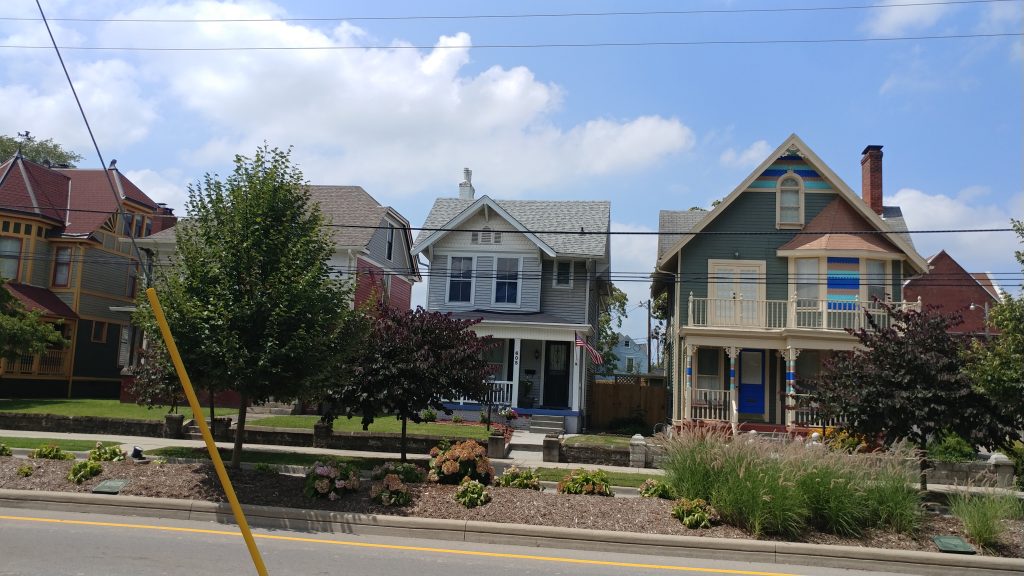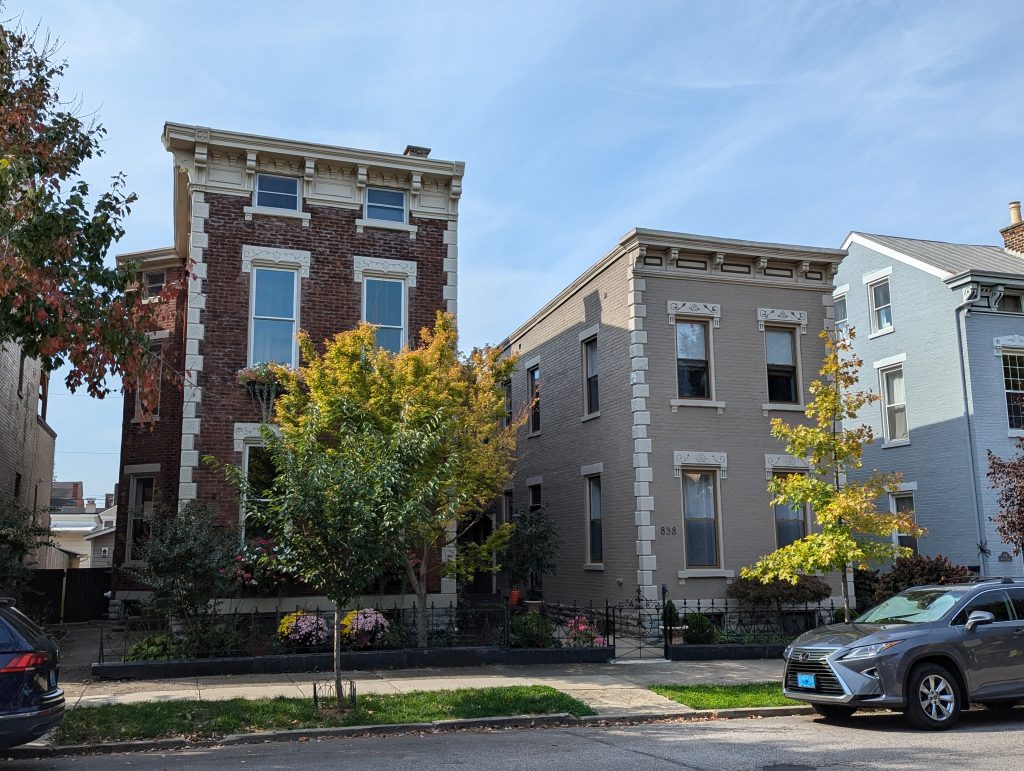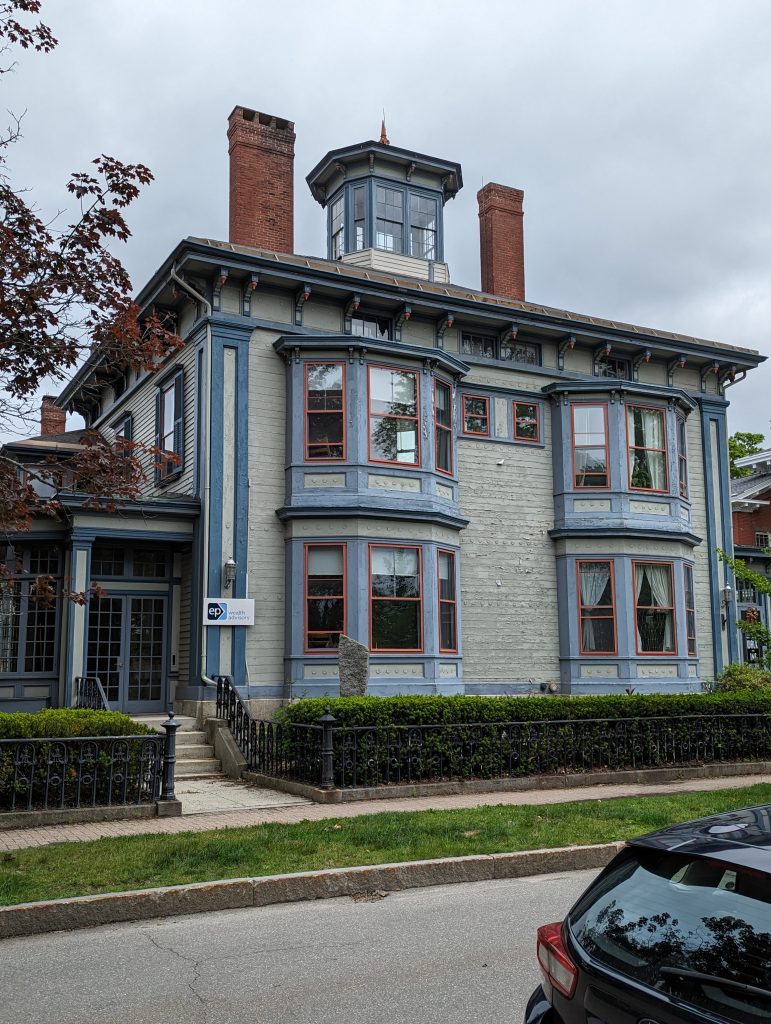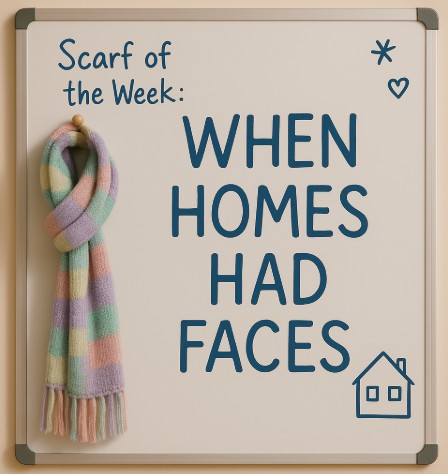Miss Ordinary takes a walk through a neighborhood that remembers how to smile — and wonders when we stopped letting houses have a little fun.
I took the long way home today — the route that cuts through the oldest stretch of town. The sidewalks are uneven, the curbs crumble, and every house seems to lean just enough to prove it’s been through something. But they smile. You can see it in the angles, the colors, the little bits of unnecessary beauty that make no sense on a spreadsheet.

It made me realize how quiet new neighborhoods have become. Everything is beige. The roofs line up like well-behaved students. The porches — when they exist — look nervous, like they’re waiting for permission to invite someone in. There’s nothing wrong with them, but there’s nothing right either.
The Beige Parade
I understand the math behind it. Efficiency. Materials. Codes. A dozen regulations that make charm a liability. But it’s strange, isn’t it? How something can be brand new and already tired?
I pass row after row of vinyl siding and right angles and think: Every house here wore the same outfit to work. Somewhere along the way, design turned into compliance.
It used to be different. I don’t mean grander — just more personal. You could walk a block and see twenty different versions of “welcome home.”

When Houses Had Faces
The old ones still show off. Brackets under eaves like smiles at the corner of the mouth. Brickwork that seems proud of its own patience. Windows framed like eyes with eyeliner. Porches built for sitting, not storage.
You can tell they were designed by people who loved the idea of arrival — who believed a front door should do more than shut.
When I was a kid, my grandmother’s house had a stained-glass window shaped like a tulip. On clear mornings it painted a red petal on the kitchen wall. That single flicker of color probably did more for my sense of beauty than any magazine I’ve read since.
We didn’t call it architecture then. We called it home.
The Cost of the Ordinary
(Shut up! -Miss Ordinary)
Now, everything costs more but feels like less. The prices rise, the square footage grows, and somehow the soul shrinks. We measure value in countertops and parking spaces instead of sunlight and proportion.
I’m not blaming anyone. Builders are trying to stay afloat. Buyers are trying to survive the math. But still — something in the exchange feels lopsided.
A house used to tell you a little story. “Someone dreamed here.” “Someone argued with a painter over that color.” “Someone carved those railings because they liked the way the curls caught light.”
Now the stories sound like silence.
The Beauty That Stayed
But here’s the good part — beauty never really leaves; it just gets patient. In every city I visit, there’s always a row of homes that refuses to flatten out. Somebody keeps repainting the trim bright blue. Someone replaces a door with stained glass. Someone plants sunflowers in a spot that can’t possibly support them, and somehow they grow anyway.
Those houses keep the language alive.

When I see them, I don’t think nostalgia — I think proof. Proof that people still crave texture. Proof that we still want the places we live to look like they have something to say.
Maybe We Just Forgot to Smile
Maybe we built ourselves into a corner. Neutral colors, neutral shapes, neutral everything — because neutral sells. But what if selling isn’t the point?
A home should offer you back a piece of yourself, not erase it. Even if all you can afford is a small patch of porch, let it wave at the street. Paint the door something that makes you grin before coffee. Hang a plant, or a bell, or a wind chime that sounds like laughter.
It’s not about vintage for the sake of vintage. It’s about generosity — the kind that shows up in form, in flourish, in care. The kind of beauty that doesn’t apologize for being visible.
Looking Forward, Not Back
I don’t want to live in a museum. I love smart design, clean lines, all the things modern materials can do. But I hope the next era of architecture finds its heartbeat again.
Imagine a new neighborhood built with the same conscience as the old ones — efficient, yes, but joyful too.
Recycled materials with soul. Solar panels on roofs that curve with confidence. Front doors that open to real porches instead of coded entryways.
We can have beauty and function. That’s not nostalgia; that’s progress with personality.
A Toast to Tomorrow’s Charm
So here’s my quiet wish, standing on this cracked sidewalk with the afternoon light turning brick to honey:
Let us build homes that remember how to greet people. Let us choose colors that smile. Let us remember that comfort isn’t just warmth — it’s wonder.
Because a beautiful house doesn’t have to be fancy. It just has to feel like someone cared how it looked when the sun came up.

The Victorians weren’t perfect, but they understood that joy belonged in the details. They left us proof in wood and stone that humans can make shelter beautifully.
I want us to believe that again.
Maybe the next great American house won’t have turrets or lacework. Maybe it’ll just have heart — built by people who still think walls should smile.
And maybe that’s how beauty comes back: One front door at a time.


